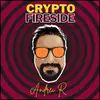🔥Crypto Fireside #5. Interview With a Scam Artist — Sheer from $SCAM (Safe Crypto and Money)

🔥Crypto Fireside #5. Interview With a “Scam Artist” — Sheer from $SCAM (Safe Crypto and Money).
🔥Hello! Who are you and what do you do?
S: I’m a freelance software developer and crypto enthusiast. I wouldn’t call myself a blockchain developer but happened to end up creating and leading a crypto project out of nowhere.
One week I was sitting at home playing around with Solidity, just two weeks later I had a community with more than 600 members on Reddit and our coin — $SCAM — had a market cap of 350,000 USD. Now both of those numbers are nothing too crazy compared to what’s out there, especially in the world of crypto. But it sure did feel crazy to me personally. Like I created something out of nothing. And it did turn my life upside down, I can tell you that.
Anyway, in my professional life, I got nothing to do with crypto at all. I create software solutions for regular companies. The more challenging the task and the more skills required, the more interesting it is to me. My dream project is probably a company contacting me with some ambitious concept and no idea how to make it happen. And then they just let me run wild coordinating efforts, learning the required skills, and bringing them into existence.
Since I wanna stay anonymous, I don’t wanna get into details about my personal life. So let’s leave it at that :)
🔥 What’s your backstory and how did SCAM come about?
S: I first got interested in crypto in early 2017. Which to me seems pretty late. And since it coincides with the 2017 bull run, it makes me look a bit lame, lol. Although it seems a lot of time has passed. And the phrase “I’m here since 2017” gets thrown around like a badge of honor suddenly. Just like people bragged about being in crypto since 2013 when I started.
Anyway, while I love crypto, I’m certainly no crypto expert. But I’d say I have a decent understanding of complex, technical systems and a passion for blockchain technology. But the one thing I really wanted to get into was Solidity. The most common language for programming smart contracts on Ethereum. I have a fascination for smart contracts, and I always really wanted to get into the development aspect of it.
Now the way I tend to learn new languages is usually by just going out and creating something with it. And to me, the classic “Hello World” equivalent in Solidity is creating an ERC20 token. It’s quite simple, very common, well-documented, and well tested, and there are tons of tutorials out there.
So I put a bit of thought into it, and then just went ahead and created $SCAM. To be clear, there are millions of tokens just lying dead on the blockchain doing nothing. Anybody with a half-decent understanding of development, or full-decent copy-paste skills, can create one. And most of them are just floating around like space debris. But I couldn’t accept that fate for my token. It’s probably in my nature. I want to create things that are actually used and change the world at least a little bit.
So right from the get-go, my brain clicked into strategy mode. And what was supposed to be a simple way to get some hands-on Solidity practice suddenly turned into a project about community building.
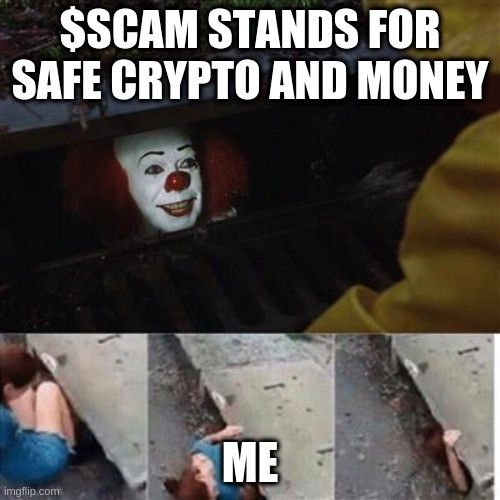
🔥 Take us through the process of creating and designing SCAM?
S: It all happened pretty quickly. From having some spare time to play around with Solidity to learning about the basics of ERC20 tokens, to forming the idea of trying to make something big out of something simple. Maybe two days in total.
Obviously, the project wasn’t based on a technological breakthrough. And I didn’t have tons of money or a big marketing network at my hands. I basically had no money, no devs, no network, and no experience at all with making crypto projects.
So not the best conditions to start off with. Right from the get-go, I was thinking about how to get the word out about my project. How to make it memeable, so it had a chance to catch on. And how to get people on board who feel committed to supporting me.
I started off with the name. Every single hyped coin had “safe” in its name at the time. So I picked that up but wanted to give it an ironic twist. In the end, I went for “Safe Crypto And Money”. That just sounded ridiculously broad and stupid and yet a bit convincing at the same time. And it had just the right acronym: SCAM. Perfect! I just had to go with it.
The other key feature I had a few thoughts about right from the beginning was supply and distribution. Obviously, there was no point in making some kind of coin offering, or asking people to buy the coin from some nobody. So I went the other way and decided to just give away a huge chunk of supply to the Reddit community. I implemented an airdrop function that would just send out 1% of the total supply to any address.
Supply on the other hand… Let’s be honest, supply is actually completely arbitrary. Most tokens have 18 decimals. So it doesn’t make a damn difference if there are 1 billion or 1 trillion of it. But psychology is a huge element in crypto and people make a big fuss about supply all the time. I went for 100 million tokens, which is probably low on the shitcoin scale. But it had a nice side effect: It meant that every airdrop would be 1 million tokens. That had a nice ring to it. I would make people “Scamillionaires”.
Next was token mechanics. I’m not a huge fan of all these over-engineered tokens nowadays, full of burn and redistribution features and hidden traps. I wanted a simple, bare-bone ERC20 implementation with little to no extras and basically no admin functions or centralized control. You could call me a purist, or you could just say I was too scared to create a smart contract vulnerability on my first Solidity project. Anyway, I kept it simple.
The last big decision to tackle beforehand was which network to deploy the token in. This was after all a fun project with a very uncertain outcome. And I wasn’t really wanting to become poor because of gas costs. Just creating the token (aka deploying it on the blockchain) and doing my 80 airdrops would have cost me a fortune in ETH paying for gas. I couldn’t afford that for a fun project. Especially since I wasn’t even sure if it would catch on. Paying a fortune to create a token that potentially nobody wanted didn’t sound good to me. Plus, all the shitcoin hype is taking place on Binance Smart Chain (BSC) anyway. Obviously, ERC20 is an Ethereum token standard. But BSC is just an Ethereum clone, with BEP20 being the equivalent to ERC20. So I went for BSC. Going for BSC was not a matter of sympathy though, I wanna make that clear. I am a huge supporter of Ethereum and love the project. But for my little $SCAM project, BSC was just the right place.
🔥 You implemented a 1% airdrop for distribution — How many have you done? How many do you plan on doing?
S: Yes, each airdrop is 1 million, which is 1% of the 100 million total supply. I will do 80 airdrops in total and have done 70 so far. Some of the airdrops are just given out on a first-come, first-serve basis. Some are distributed to people who perform well in competitions. I distributed the remaining 20% to friends and family. And I also use some of the remaining funds for smaller incentives and development.
🔥 Describe the process of launching SCAM.
S: After testing my token on an Ethereum testnet, I deployed it to the BSC mainnet. For the first day or two, it was just sitting on the blockchain, not doing much. I sent it back and forth with a few friends, tried out Pancakeswap, and created a liquidity pool for $SCAM.
I then thought about my next move. How could I get people involved with my project? On a sunny Saturday, I sat down and wrote a post for r/BNBtrader and r/Binance titled “I created my own BEP20 token and I’m giving it away for free!”. I basically just told people the truth. How I dabbled around with Solidity, created a token, put it on Pancakeswap, and how people can have an airdrop of 1 million $SCAM if they are quick. I didn’t know what to expect, but kind of assumed nobody would even care.
What really happened, however, surprised me a lot! There was a wave of positivity after my post. I got tons of messages asking about the airdrop, expressing their support, or just generally like the idea. Many also contacted me to learn more about programming in general, which was really amazing. Some even asked me if there is a place for $SCAM holders to talk to each other. So after another few days, I decided to use the momentum and created r/scam_coin, our own Subreddit. I invited everybody to join who had contacted me about $SCAM before, and in no time there were about 70 members. This was probably the founding moment for our community. The moment my project shifted from a fun little programming lesson to an actual community effort.
There were a few more distribution rounds, and with every single post about our community, we grew even more. By now our subreddit is sitting at the 600-member mark. There are meme competitions, trading competitions, a Telegram group, and a Discord server. But most importantly, there is so much positivity. Many have expressed that our community was just the right place to learn about the ins and outs of crypto and DeFi in a peaceful way. It’s become quite a task to manage the whole project, but it’s such a joy every single day. I feel like we are actually working together to create a wonderful place in a sea of shitcoins.
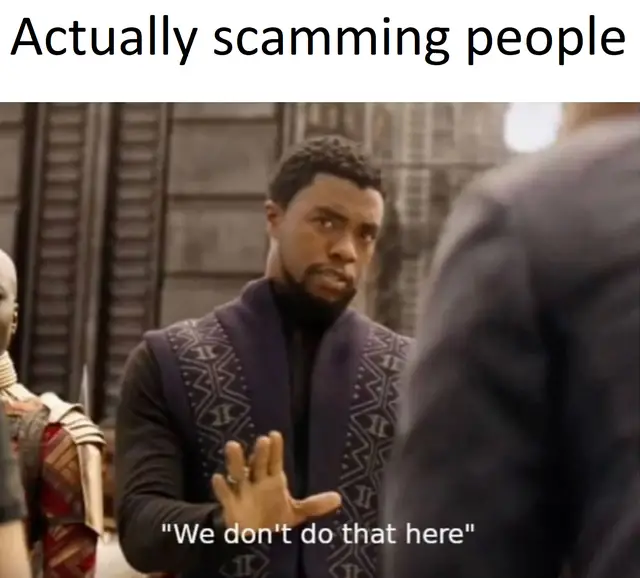
🔥 Since launching SCAM what has worked to attract and retain users and investors?
S: Our community has grown quite a bit since our humble beginnings just a few weeks ago. So naturally, there are many strong opinions about what to do next. It’s not always easy to manage that.
A few things have worked to attract and retain people. Some are done by me, but some are out of my influence and come from our amazing community. Things that I try to do myself are to communicate often and be honest. I feel like many appreciate my regular posts on Reddit where I describe my view of the project, try to pick up topics that have been discussed by our community, and explain what I want to tackle next. I’m also trying to be open about stuff that is lagging behind due to our fast growth. Just three weeks ago $SCAM was nothing but a crazy pipe dream. So a few things, like building a website, are still a work in progress. That’s not ideal. But again, I would have never thought $SCAM would ever even need a website when I started this.
Something that comes from our entire community and that I feel is even more important than my personal effort is the welcoming and positive vibe we have. Nobody has to be scared to ask questions about how certain things work. Even when I’m not around, there are huge discussions about stuff like how liquidity pools on Pancakeswap work. People share what they know and figure it out together.
When we had a very successful post on r/cryptocurrency just a few days ago, our community doubled in a matter of hours. I was completely overwhelmed with messages and requests for the entire day. But our community stepped in and welcomed all of our new members and responded to all the questions popping up. It was honestly a great team effort!
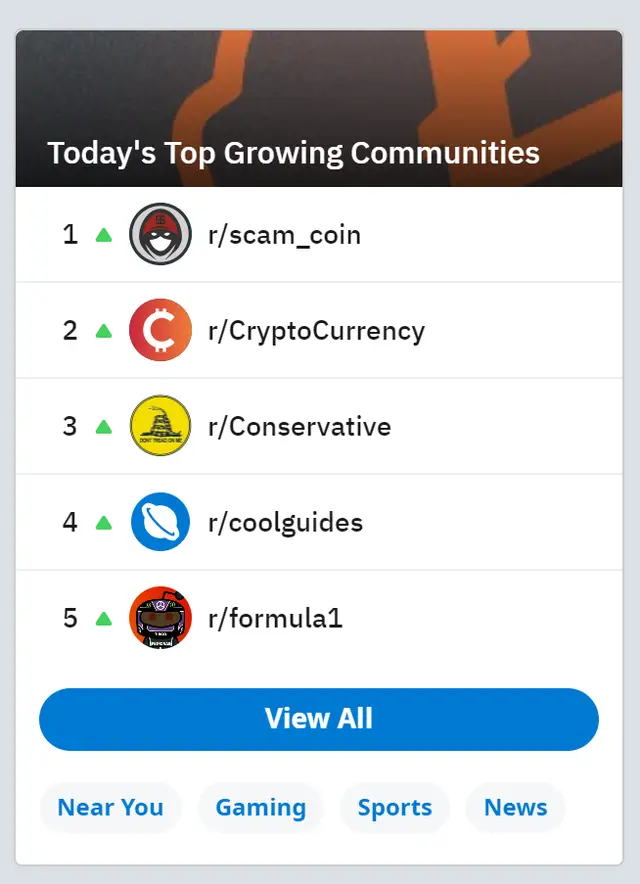
🔥 How are you doing today and what does the future of SCAM look like?
S: I’m pretty happy with the way our community has grown. As I said, we have more than 600 members on Reddit. Our $SCAM token had a market cap of around 350,000 USD before the market crashed a couple of days ago. And our liquidity pool on Pancakeswap is carried by the entire community. Just ten days ago I was the only one providing liquidity there, now the pool is shared among 35 community members, with no single person holding more than 22%.
And our community is pretty engaged with the project in general. We have multiple people working on our website, and there is a lot of activity on our social media channels. The other day I was taking a day off to get some rest and spend time with my family. When I came back online after 24 hours, there were 700 new messages in our Telegram group. That’s pretty overwhelming but definitely very awesome! You have to consider that I’m not a social media personality with a huge marketing network. I’m just an average guy who started this from his living room.
So short-term targets are rolling out the website and increasing our presence on social media and other platforms. I’m also currently working on a smart contract to reward community members who provide liquidity. I hope we can get those things out by next week.
Long term there are lots of ideas floating in the community about creating an actual use case for our token. They range from blockchain games to scam-prevention platforms. But that’s all a thing of the future. Personally, I can say I definitely want to continue down the path of building blockchain applications. And I will include $SCAM into them as much as I can. I can’t promise anything, but I would love for $SCAM to be like a hub token for a whole suite of applications built by me.
🔥 Through starting SCAM, have you learned anything particularly helpful or advantageous?
S: Generally speaking, I think people should just go for it if they have a crazy idea in their head. It might grow bigger than they thought. And if it doesn’t, it’s still a fun learning experience. Sounds pretty lame and generic, but whatever :)
When it comes to managing the project, I realized two things:
1. At some point you can’t make everybody happy. There are just too many faces with too many opinions around. So take suggestions into consideration, but go down the path that you consider to be the right one.
2. On the other hand, at some point you can’t handle everything by yourself. There is just too much work to do. So get people from the community who are willing to help, and delegate responsibilities.
🔥 What platforms and tools do you use to run SCAM?
S: When it comes to smart contract development, the two must-have tools are of course Metamask and Remix. Metamask can be set up to work on BSC as well, and Remix is probably the go-to development tool to compile and deploy Solidity code on Ethereum (or BSC for that matter).
Our website is being developed on GitHub. Again, the go-to tool for code management and distributed development. No surprises there.
When it comes to management, with our community being so decentralized, I try to use topic-related Telegram groups to have some kind of structure. For example, I would throw everybody interested to work on liquidity incentives in a Telegram group and let them bounce ideas, show off results, fork code and go their own way. That’s also a great way to have a talent pool for future development work.
🔥 What have been the most influential books, podcasts, people, or other resources?
S: The most impressive book I have ever read is “Measuring The World” by German author Daniel Kehlmann. It follows mathematician Friedrich Gauss and discoverer Alexander von Humboldt along a semi-fictional life story. And it just moved me like no other book ever did.
A classic resource that pulled me down the crypto rabbit hole is the original Bitcoin White Paper “Bitcoin: A Peer-to-Peer Electronic Cash System” by none other than Satoshi Nakamoto. When I first came into crypto, I read a few high-level explanations of Bitcoin and Blockchain technology. And nothing really convinced me. I finally read the White Paper, and it blew my mind right away. I still remember the very moment it happened.
And a good book to learn about smart contracts is “Mastering Ethereum” by Andreas Antonopoulos and Gavin Wood. The latter is no other than the co-creator of Ethereum and Solidity, and author of the original Yellow Paper defining the Ethereum Virtual Machine.
🔥 Where do you see this entire crypto space going in the next 5 years to 10 years?
S: In 5–10 years crypto has probably already become a regular and accepted asset class just like stocks, bonds, or real estate. We already went down that path over the past few years, and I think this development will continue. Actually, I think it will probably take far less than five years.
Also, I firmly believe more and more things will be tokenized and live on the blockchain. I’m talking about property, stocks, insurance, art, debt, and all kinds of stuff.
The one thing I have a hard time wrapping my head around is, how blockchains will be interconnected. I can see how a network of inter-blockchain protocols will connect various blockchains, creating an Internet of cryptocurrencies. This opens a whole can of worms, like how protocol standardization might be necessary to move this process forward. And it will probably lead down the path of routing protocols that will seamlessly jump between blockchains and find the fastest and cheapest path from point A to point B. You might see an NFT sitting on Ethereum being sold for DAI, swapped to Eth, bridged to Cardano, and atomic swapped to Monero in one almost-instant transaction. I have a hard time believing it myself when I ramble on about this kind of stuff. But then again, it seems to be so obvious.
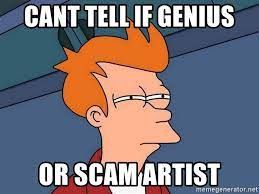
🔥 Where can we go to learn more?
S: Our main landing page is probably our Subreddit until the website is finished. You should definitely check our community out at https://www.reddit.com/r/scam_coin/
We are also on Telegram: https://t.me/SCAM_Coin_Community
And Twitter: https://twitter.com/scamcoincrypto
Feel free to stick around any of our community channels.
🔥 Thank you, Sheer!
Want to know how you can support Crypto Fireside?
Sign up below. It's free and easy 🔥.

